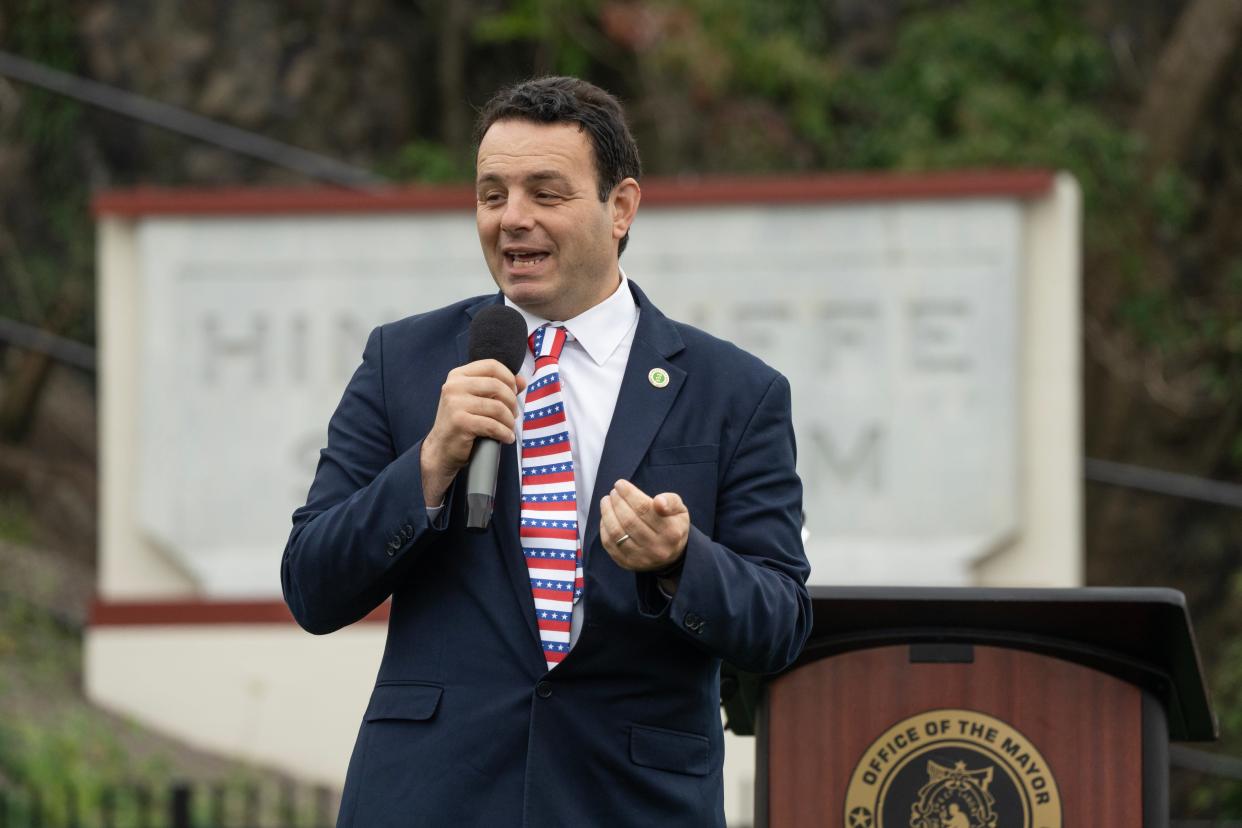Study examines whether Paterson’s Guaranteed Income program was a short-term fix
PATERSON — The mayor’s experiment with giving 110 city residents $400 per month for a year produced “mixed results,” according to a study conducted by the University of Pennsylvania.
The extra money from the Guaranteed Income, or GI, program — which came in the form of gift cards with no spending restrictions — improved the low-income recipients’ lives, the study said.
“The GI seemed to ease the dual burden of making ends meet and providing [child] care, allowing recipients to better balance their time,” said the report.
But the Penn researchers also noted that the benefits seemed short-term. “While encouraging, these positive trends felt unsustainable given the significant pressures people in Paterson faced,” the study said.

That report came out recently, as Mayor Andre Sayegh was in the process of launching the second wave of Guaranteed Income, using about $1.4 million in Paterson’s federal COVID-relief funding to expand the program to provide the $400 per month in financial assistance to 200 families for the upcoming year.
How does the program work?
About 6,000 Paterson residents applied for the second phase, with 5,800 of them losing out in the lottery used to pick recipients.
Sayegh already is talking about a third phase, one that would dramatically expand the program to cover 1,000 families. The mayor is hoping to get the money for the third phase from the state government. The first phase was funded with private donations.
The study and press conferences hosted by the mayor featured anecdotal information about ways participants in GI said their lives got better with the extra money.
“In the sense that I’m not stressing as much as I probably should have, given that I have a $400 cushion,” said Lizette, described in the study as a 42-year-old accountant. “You know, as opposed to trying to maybe do a third job like Uber or something, I’m actually able to just, you know, stay home, unwind, you know, not have so much stress where I’m taking it out on the family.”
Councilman Luis Velez called GI “a good program,” saying the thousands of lottery applicants showed how much it is needed. He said one of the problems is that the extra financial assistance is short-term.
“We’re helping you for a year, but then you have to help yourself from that point on,” the councilman said.
The Penn study acknowledged its limitations, including the small number of people who participated and the fact that the first phase of the GI program — from mid-2021 through mid-2022 — took place during the latter stages of the pandemic.
The study found that 83% of the GI recipients saw no change in their household savings at the end of the program, and the same percentage of people said their families could not cover a $400 emergency expense.
At the start of the program, 32% of GI participants had full-time jobs, but that dropped to 28% at the end of the program, the study said. The decline in full-time employment was more dramatic for the study’s “control group,” residents who were not getting the $400 per month. The report said the control group’s full-time jobs plummeted from 35% to 13%.
“Recipients were able to use GI towards their rent, and in some cases, also improve the quality of their housing,” the Penn report said. “But these were only temporary trends, given the significant disparities people in Paterson faced. Together, these findings suggest that $400 blunted the impact of structurally produced scarcity, but it was not enough to mitigate the broader context of the pandemic, inflation, and housing costs. It nevertheless represented a significant beginning.”
More from Paterson Press: 200 families will receive $400 each month through guaranteed income program
Who is receiving the benefits?
During the first phase, Paterson’s GI program set the income eligibility limits at $30,000 for individuals and $88,000 for families. In the second phase, $38,910 was the limit for a single person, $82,465 for a household with two people, $110,311 for three people, $148,028 for four people, $184,405 for five people, and $220,778 for six.
Sayegh did not respond to questions about why the income limits were changed.
NorthJersey.com readers reacted with disbelief when the new income limits were published in a story published at the end of September.
But as it turns out, Paterson’s second phase of GI doesn’t have anyone with a six-figure income receiving the $400 monthly benefits, according to data recently provided by city officials.
The city’s data said 44 recipients were unemployed and 22 were collecting Social Security. Twenty-four GI phase two participants had household incomes of less than $20,000, 35 had incomes between $20,000 and $30,000, 41 were between $30,000 and $40,000, 24 between $40,000 and $50,000, and seven between $50,000 and $60,000.
The recipients included 56 single people, 53 two-person households, 44 three-person families, 36 with four people, and 10 with five family members, according to the city’s data.
“The $400, although a relatively low sum of money, therefore made an enormous difference in getting by for some participants; respondents shared overwhelmingly that they used the GI towards rent and household bills,” the Penn study said. “At the same time, the level of short-term need was so great that $400 could only go so far.”
Joe Malinconico is editor of Paterson Press. Email: editor@patersonpress.com
This article originally appeared on NorthJersey.com: Paterson NJ: Guaranteed Income program questioned in new study
